Food and drink highlights of Norway
- Tipping - It should be remembered that the waiter service is included in most Norwegian restaurants, while giving tips is a sign of pure courtesy.
- Eating hours -
- Shopping hours - Shops are usually open from 10 am to 5 pm; Thu 9 am - 6 pm; Sat 10–13 / 15. Supermarkets usually Monday to Friday 9-20; Sat 9-18. However, they are closed on Sundays.
- Discount shops -
- Cuisine type - Norwegian cuisine is simple, but at the same time tasty, varied and rich in calories.
- Savoir Vivre - During the meal, Norwegians rarely eat with their hands - they even use cutlery to eat sandwiches. Dinners are usually long. If you leave right after dinner, you might be accused of bad education. Usually the Norwegians stay after dinner to spend time and help the host.
- Main ingredients - Ingredients are mainly the raw materials readily available in Norway, like game and fish. Modern cuisine has been influenced by globalization: pasta, pizza, tacos, and they are as common as meatballs and cod.
- Most popular alcohol - Alcohol (especially the stronger one) can be purchased only in Vinmonopolet and mainly during the week in regular hours.
- Important info - The Norwegian housewife will ask only once if we want something to eat and if we refuse, no one will ask us for the second time.
Did you find this information valuable?
Thank you for co-creating with us! 😊 Remember to give us feedback by pressing the thumbs up or down under every section.
The quality of content is essential for us. Please let us know what influenced your opinion.
Thank you!
Foods to try in Norway
- FårikålConsisting of pieces of mutton with bone, cabbage, whole black pepper and occasionally a little wheat flour, cooked for several hours in a casserole, traditionally served with potatoes boiled in their skins.
- KjøttkakerMinced meat is seasoned and kneaded with a variety of ingredients, such as onions or rusk, before it is formed into small cakes and pan-fried. These are then simmered in gravy and served with either mashed peas or creamed cabbage.
- LefseNorwegians love this sweetened variety of the traditional soft flatbread with a cup of coffee. It is slathered with a blend of butter, sugar and cinnamon, then meticulously folded or rolled and cut into portions.
- PinnekjøttThis hearty meal of salted, air-dried rib of sheep is traditionally served on Christmas Eve. The ribs are rehydrated, steamed over birch sticks and served with mashed kohlrabi.
- SveleSmall, fluffy cakes, resembling pancakes. Usually eaten for afternoon coffee or as a snack between meals, served with butter and either sugar or brunost. The use of salt of hartshorn (ammonium bicarbonate) and baking soda as raising agents give these cakes their characteristic flavour.
Did you find this information valuable?
Thank you for co-creating with us! 😊 Remember to give us feedback by pressing the thumbs up or down under every section.
The quality of content is essential for us. Please let us know what influenced your opinion.
Thank you!
Unusual facts about food in Norway
- Norwegians love coffee, they can drink four to five cups every day. On average, they consume about 9 kg of coffee per year.
- Stockfish is a dried fish, most often cod, which is a typically Norwegian delicacy. They are produced only in Lofoten.
- Cod fish are dried from March to May and can be bought in around 30 countries, such as Italy.
- Eating a whale meat is normal and natural in Norway.
- The mysterious pålegg hides a whole lot of possibilities - it can be cheese (with an emphasis on brown cheese - brunost), ham, salami, pate, caviar, but also jam, chocolate or cheese.
Did you find this information valuable?
Thank you for co-creating with us! 😊 Remember to give us feedback by pressing the thumbs up or down under every section.
The quality of content is essential for us. Please let us know what influenced your opinion.
Thank you!
Place to stay in Norway
- Best booking sites -
- Seasonality - Expect the highest prices in July.
- Cost-effective - The factor reducing the price may be a room without windows, located in the basement / underground part. This is a very common outline in the Scandinavian countries. In case of good weather, we definitely recommend campsites and holiday homes for a larger group of people.
- Parking - Unfortunately, it can be different with parking lots. The parking option and whether it is free should be checked directly at the hotel.
- Local names - Hytte is rented year-round homes entirely, while a rorbu is fishing huts which have changed their destiny and are very popular among tourists.
- Unusual accommodation - You can find unusual accommodation types under the following keywords: Juvet, Canvas Hove, Oscarsborg, or Kraggbua.
- Camp - Norwegian campsites are of a very good standard. They can be crowded in summer.
- Important - Accommodation costs are among the highest in Europe.
- Warning - Please check reception hours; some hotels have limited check-in hours.
Did you find this information valuable?
Thank you for co-creating with us! 😊 Remember to give us feedback by pressing the thumbs up or down under every section.
The quality of content is essential for us. Please let us know what influenced your opinion.
Thank you!
Accommodation in Norway
- It is worth checking the offer for houses in Norway from Interhome. Some holiday homes and apartments will surely allow you to feel the real breath of 'scandinavian glamping'.
- If there are no places at the campsite (and not only), Norwegian law allows to up the tents in the wild.
- In most coves parking spaces, it is forbidden to stay overnight, so you should look for a place to wild stay by the side roads, away from buildings.
- It is not allowed to pitch a tent in places marked 'No camping'.
- Visit Stavanger Pop Up Hostel - it is presented as an incredibly atmospheric and proven place.
Did you find this information valuable?
Thank you for co-creating with us! 😊 Remember to give us feedback by pressing the thumbs up or down under every section.
The quality of content is essential for us. Please let us know what influenced your opinion.
Thank you!
Getting around Norway
- Most popular - The most popular option for traveling in Norway is by car. Especially if you gather the group of people the costs are lower.
- Cost-effective - The air connections are very favorable for Norwegian conditions. Often, the flight costs less than traveling by coach or train on the same route. Due to the poorly developed infrastructure in the north, we can reach Norway's furthest corners most conveniently and not at all more expensive than by bus.
- Time-efficient - Due to the long distances, planes are the fastest means of transport.
- Traffic safety - Norwegian roads are of good quality, but they are rather regular single lane roads.
- Warning - It is not recommended to violate traffic regulations. Speeding is punished absolutely, a fine is offered or alternatively a penalty of arrest.
Car
- When renting a car, it is worth checking each time whether the insurance is included in the price or whether you need to buy it additionally..
- There are many scenic routes in Norway and almost every road is picturesque. That is why you can meet the National Tourist Route.
- It is not allowed to drive a vehicle that is not registered in Norway without the presence of the vehicle owner in the car.
- Many ferries cannot be entered with a gas-powered vehicle.
Bus
- There are well-developed bus connections, especially in larger cities in southern Norway.
Plane
- The fastest and easiest way to get to the north of the country is to use the air connections offered by cheap airlines like Wideroe or Norwegian.
- Sandefjord-Torp airport is about 120 km from Oslo and Gardermoen airport about 50 km.
Train
- The most popular route is the railroad connection between Oslo and Bergen. This route abounds in beautiful landscapes, which you can enjoy during a seven-hour journey.
Boat
- On the west coast of Norway, there is a well developed ferry network.
- There are over 100 ferry crossings in Norway that are part of the road system. The ferry crossing is included in the road number.
Hitchhiking
- Hitchhiking is popular, but it is worth hitchhiking right on the ferry.
- Traveling in Norway by hitchhiking is possible, legal and pleasant.
- Patience - this is the most important thing we must arm ourselves with when deciding to travel in Norway in this way. Owning at least one car is the norm in Norway; therefore, it is not popular to give lifts to others.
Bicycle
- There are many convenient bike paths in Norway. And large, covered bicycle parking is almost standard.
- Cyclists are privileged road users, so pay special attention to them.
Did you find this information valuable?
Thank you for co-creating with us! 😊 Remember to give us feedback by pressing the thumbs up or down under every section.
The quality of content is essential for us. Please let us know what influenced your opinion.
Thank you!
How to travel in Norway
- On en-tur.no you will find the available public transport offer depending on your destination.
- It is worth buying the Oslo-Pass card, it gives you the opportunity to enter several attractions and use public transport at a price.
- When using public transport, it is worth considering the purchase of time tickets.
- The most important places in Norway are far away from each other, and unfortunately public transport is very expensive.
- At every gas station you can receive a brochure containing information on the network of petrol stations throughout the country selling LPG fuel.
Did you find this information valuable?
Thank you for co-creating with us! 😊 Remember to give us feedback by pressing the thumbs up or down under every section.
The quality of content is essential for us. Please let us know what influenced your opinion.
Thank you!
Best time to visit Norway
When to go
- The best time to go to Norway is summer, from June to August. At that time, you can count on high temperatures and the greatest amount of sunshine.
Temperature
- The average temperatures in Norway vary greatly. Given the humidity, temperatures are low for most of the year.
- The hottest season is at the end of July, when temperatures regularly reach 18 ° C and rarely drop below 10 ° C at night.
Rainfall
- Precipitation is abundant, especially on the coasts, while decreasing inland.
- Along the beach, the rainiest months are the autumn and winter ones.
- Eastern areas receive less than 300mm of rain per year.
- The rains, brought by the Atlantic winds, decrease from the coastal zone (where in some south-western coastal areas even exceed 2,000 mm per year) towards the interior.
Spring
- In March, April, and May, the days get longer and it is getting warmer all over the country.
Summer
- In June, July, and August, the days are long and the nights short. North of the Arctic Circle you get the midnight sun. The summer weather is quite stable, and the temperatures are pleasant alike on land and at sea.
Fall
- In September, October, and November, the days are getting shorter, the air sprightly, and the colours more gleaming. Autumn is the perfect time for a city break.
Winter
- Winter nights are long, and from the middle of November until the end of January at all in parts of Northern Norway the sun doesn’t rise. However, aurora borealis could be dancing overhead. On the other hand you can expect between six and eight hours of daylight in southern Norway.
Did you find this information valuable?
Thank you for co-creating with us! 😊 Remember to give us feedback by pressing the thumbs up or down under every section.
The quality of content is essential for us. Please let us know what influenced your opinion.
Thank you!
Norway weather Insights
- The turn of June and July is the best time to get to know the white nights. There is no astronomical twilight and the day lasts over 20 hours.
- The coastal zone is characterized by a maritime climate, and the North Atlantic Current ensures that ports, even in the far north, do not freeze.
- The weather in July is favorable for over 41% of Norway's territory.
- July is the hottest month in Oslo, the coldest months being January and February.
- The rainiest months in Oslo are May, July and August.
Did you find this information valuable?
Thank you for co-creating with us! 😊 Remember to give us feedback by pressing the thumbs up or down under every section.
The quality of content is essential for us. Please let us know what influenced your opinion.
Thank you!
Savoir-Vivre in Norway
- Greetings - To say hello, free but firmly shake your hand, remember to direct eye contact and smile.
- Punctuality -
- Dress code - Even in summer do not forget about warm and waterproof clothing and shoes. Also pack your cap, scarf and gloves. Find out more information in our packing section. In Norway sports style is popular among the inhabitants, because it is comfortable.
- Home invitation - If you are invited to a Norwegian's home, bring flowers, chocolates, pastries, wine, or imported spirits to the hostess. You need to know that carnations, lilies and white flowers are often used at funerals, so try not use them. Remember about taking out your shoes right after entering the house.
- Etiquette - As a man, you should take off your hat or cap when entering your home and eating.
- Drones - We recommend using this map to easily check the applicable restrictions. If you are looking for more specific information take a look here.
Did you find this information valuable?
Thank you for co-creating with us! 😊 Remember to give us feedback by pressing the thumbs up or down under every section.
The quality of content is essential for us. Please let us know what influenced your opinion.
Thank you!
Things not to do in Norway
- Norway is quite an expensive country, and It is highly recommended to take out travel insurance.
- It is compulsory to take a shower (naked) before entering the pool.
- Book your accommodation and car rental in advance, because during the holiday season, cheaper options disappear very quickly.
- People going to Spitsbergen (Svalbard province) should book a hotel seat before departure and strictly follow the rules of the Governor of Svalbard concerning the rules of movement in the region.
- An identity document is required during exchanging currencies. Such a document may also be requested of the person with card or credit card issued outside Scandinavia.
Did you find this information valuable?
Thank you for co-creating with us! 😊 Remember to give us feedback by pressing the thumbs up or down under every section.
The quality of content is essential for us. Please let us know what influenced your opinion.
Thank you!
Interesting facts about Norway
- Accommodation and communication are very expensive in Norway, and prices in restaurants are extremely high.
- Norway is a country of very friendly and helpful people who visit a lot each other, so there is also a positive attitude towards foreign travelers.
- According to the Norwegian saying there is no bad weather, there are only bad clothes.
- An amazing tourist attraction is the so-called Troll Road, where we can see road signs: 'Watch out for trolls'.
- In Norway we can come across 400 language dialects. Sometimes Norwegians from different parts of the country are not able to communicate with each other. As a result, they speak English.
Did you find this information valuable?
Thank you for co-creating with us! 😊 Remember to give us feedback by pressing the thumbs up or down under every section.
The quality of content is essential for us. Please let us know what influenced your opinion.
Thank you!
Best souvenirs from Norway 💝
Norway is a fascinating and increasingly popular destination for travelers. Beautiful landscapes and bustling cities attract thousands of tourists. If you want to show your loved ones the magic of Norway, or you want to keep memories connected with it for as long as possible - check out our guide for the most interesting souvenirs!
🍺 Beverages
Aquavit 💲 💲 💲 💲
Aquavit means ‘firewater’ and has been in present in Norway since the 15th century. Made from potatoes or grain with a distinct herby flavor, Aquavit is not for the faint of heart.
🛒 Where to buy: supermarkets
💰 Price range: 90 - 450 NOK
🎁 For whom: grandparents, parents, friends
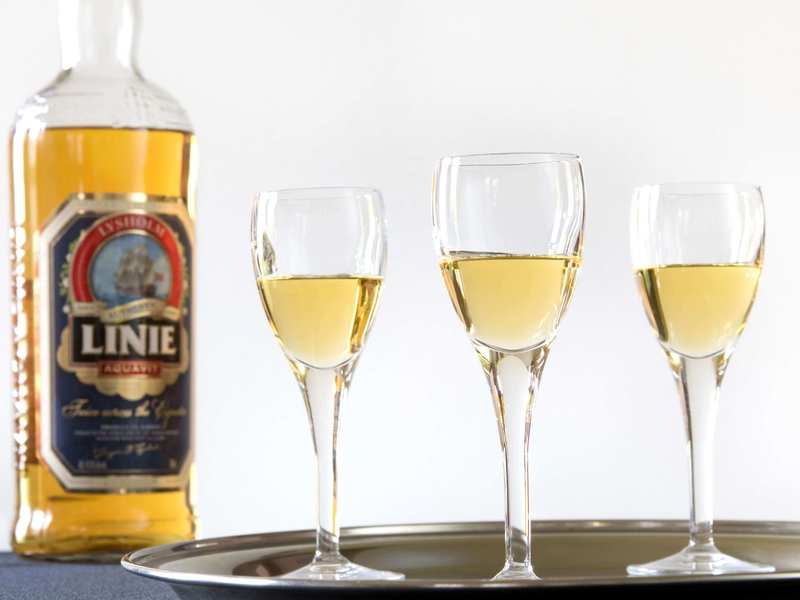
Craft beer 💲 💲 💲 💲
Even though the prices of alcohol in Norway are very high, the drinking culture is still active. The new craft beers are popping up in different parts of the country. So the next time that you'll go drinking, try ordering one of the local beers or maybe even bring one home! You'll be suprised by their distinctive taste and brewing methods!
🛒 Where to buy: supermarkets, dedicated shops
💰 Price range: 30 - 90 NOK
🎁 For whom: friends
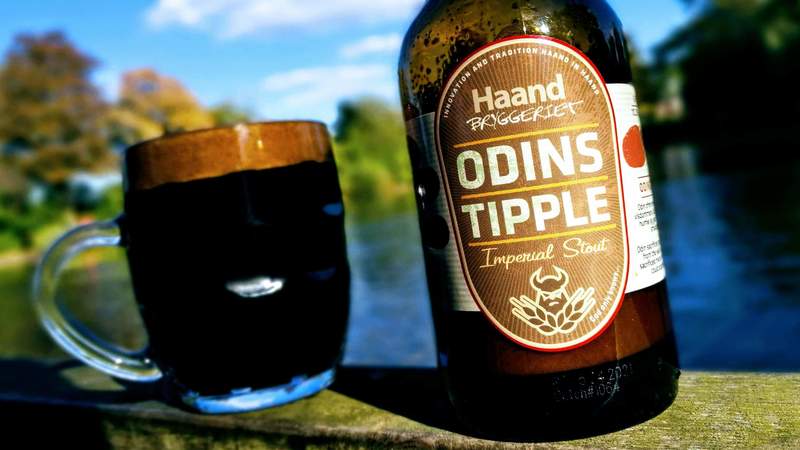
👚 Clothes
Bunad 💲 💲 💲 💲
Bunad is a modern take on a traditional clothing. Inspired by the traditional gowns, Bunads can be worn on any important occation. Their history goes back to the XIX century, when Norwegians began to take interest in reinventing their traditions with a touch of modernism. They became really popular in the XX century and now can be found in the variety of options, from embroided scarfs to long skirts for women and decorative pants for men.
🛒 Where to buy: gift shops
💰 Price range: 20000 - 40000 NOK
🎁 For whom: grandparents, parents, friends
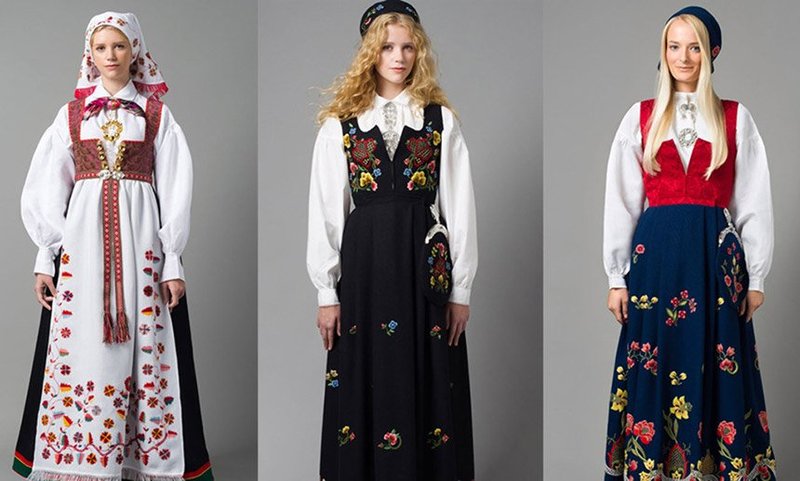
Norwegian sweater 💲 💲 💲 💲
Northen climate can suprise anybody, so it's good to go prepared. But if you're looking to bring home that will remind you of the cold, why don't you buy a nice, norwegian sweater? They're usually knitted with the high quality wool and feature the typical patterns that everyone knows and loves.
🛒 Where to buy: gift shops
💰 Price range: 500 - 3500 NOK
🎁 For whom: grandparents, parents, friends, kids
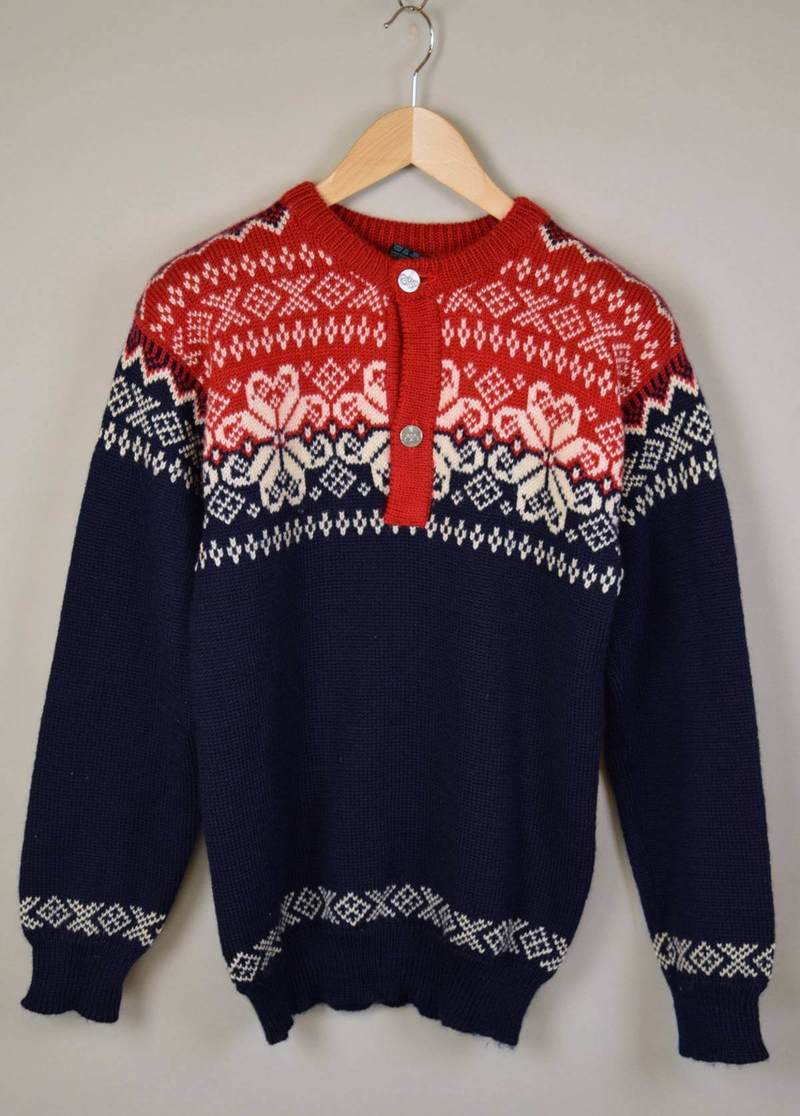
Selbu mittens 💲 💲 💲 💲
Norway has a long and rich tradition of knitting and embroidering. Perhaps the best proof of that are hand-knitted mittens known as Selbu. Available in a variety of colors and patters, the mittens will keep your hands warm in the coldest days and will serve as a thoughtful gift for someone important in your life.
🛒 Where to buy: gift shops
💰 Price range: 400 - 1000 NOK
🎁 For whom: grandparents, parents, friends, kids
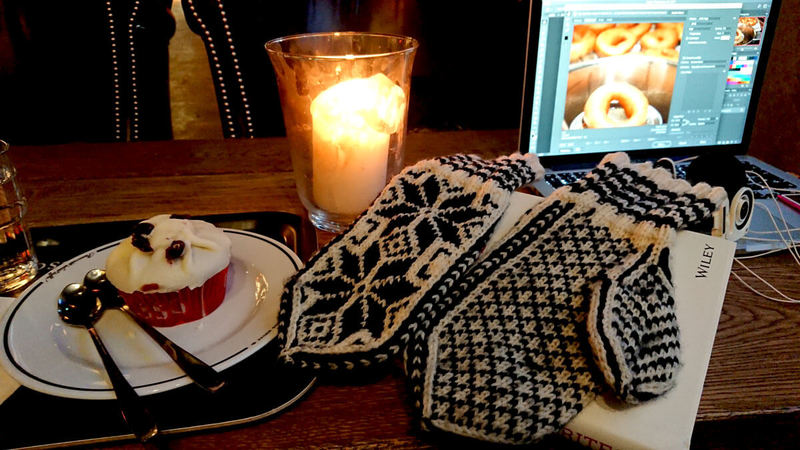
🛍 Collections
Folk music CD 💲 💲 💲 💲
You may not know it, but Norwegians really like their folk music. So much so that every bar sounds like folk record studio each evening! If you like how the Norwegian folk sounds and you would like to remember this unique sound for longer, you should invest in a CD with folk music. Either vintage or new, it's a great souvenir and an even greater gift for someone who loves music and new sounds!
🛒 Where to buy: dedicated shops
💰 Price range: 130 - 200 NOK
🎁 For whom: grandparents, parents, friends
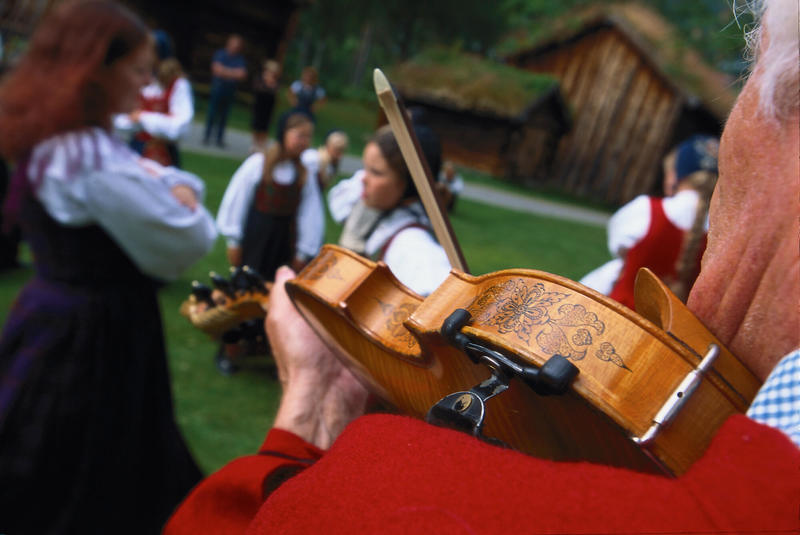
Ostehøvel 💲 💲 💲 💲
This patented Norwegian cheese slicer has been invented by Thor Bjørklund who was frustrated with his knives' inability to cut cheese properly. Produced and exported since to the rest of Scandinavia, you may even have seen it at IKEA! Yet the original one is still being produced in Bjørkund’s factory in Lillehammer.
🛒 Where to buy: dedicated shops, gift shops
💰 Price range: 80 - 500 NOK
🎁 For whom: grandparents, parents, friends
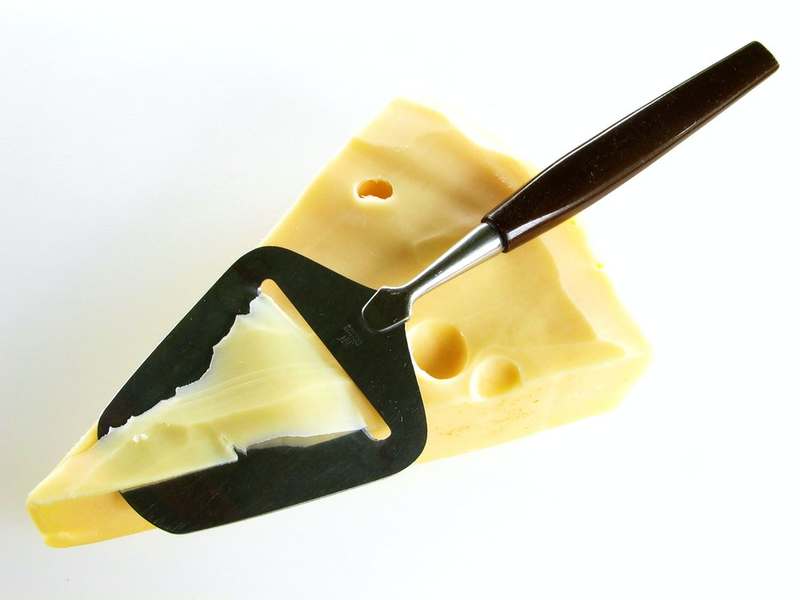
Solje jewellery 💲 💲 💲 💲
Solje jewellery is a obligatory piece that completes a traditional Norwegian outfit. But if wearing a whole traditional Norwegian costume feels like a bit much, a statement piece of jewellery can still illustrate a recent visit to Norway. You can find Solje jewellery, pins and brooches both vintage and new.
🛒 Where to buy: gift shops
💰 Price range: 350 - 2000 NOK
🎁 For whom: grandparents, parents, friends
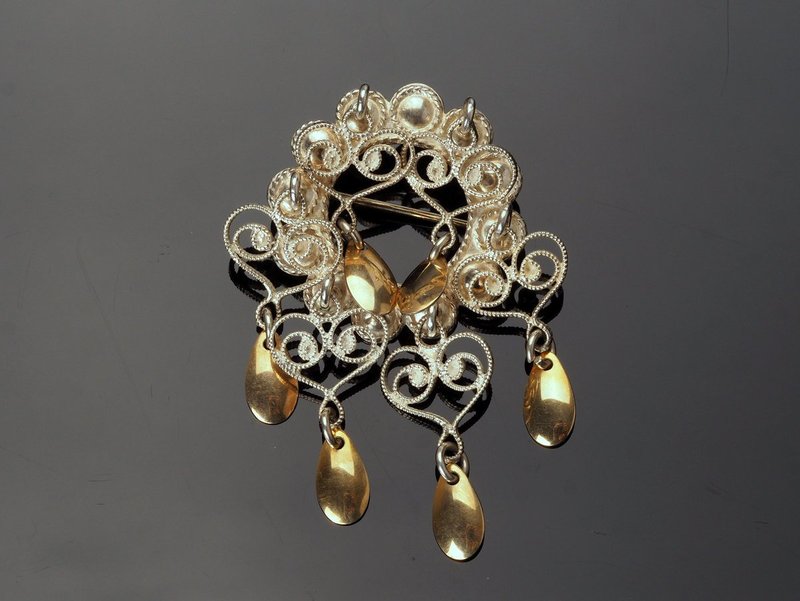
Troll figurine 💲 💲 💲 💲
Trolls play an important part in Norwegian mythology, and wooden carved troll statues have been a traditional gift for ages. They come in all shapes and sizes from big to small, angry to friendly. The folklore surrounding the trolls is endless, so feel free to buy a troll figurine from a souvenir shop. According to the legends, if, when buying, you'll think of a friend you're buying the gift for, the right troll will wink.
🛒 Where to buy: gift shops
💰 Price range: 200 - 600 NOK
🎁 For whom: friends, kids
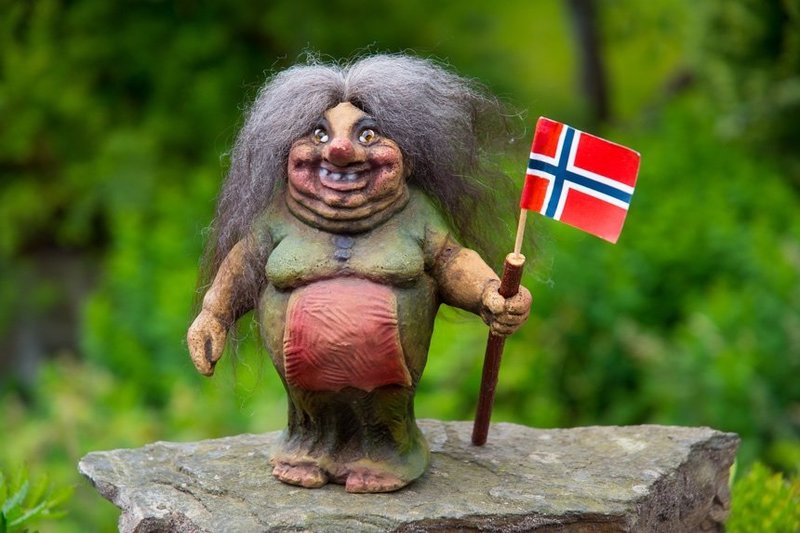
🥗 Food
Baked sweets 💲 💲 💲 💲
Norway is known not only for it's delicious fish, but also for their unusual, yet amazing sweets! You should definately try their baked goods from the local bakery! Kransekaka, Skolebrod, Berlinerkranser or Julekake - you have a plenty to choose from!
🛒 Where to buy: supermarkets
💰 Price range: 30 - 250 NOK
🎁 For whom: grandparents, parents, friends, kids
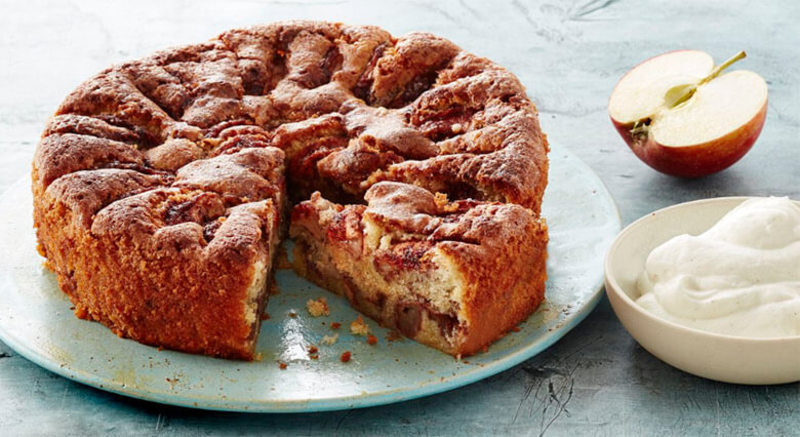
Cloudberry jam 💲 💲 💲 💲
This unique jam is a national delicacy! Made from fruit known as cloudberry that resembles a raspberry in it's shape, the jam goes perfectly with waffles and pancakes.
🛒 Where to buy: supermarkets
💰 Price range: 160 - 220 NOK
🎁 For whom: grandparents, parents, friends
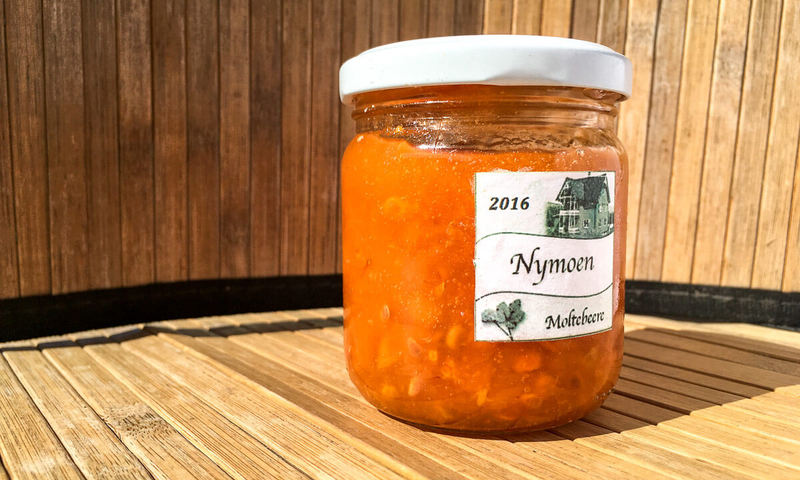
Freia chocolate 💲 💲 💲 💲
Freia Milk chocolate is the most typical Norwegian chocolate. You can buy it in flavours milk or dark chocolate with nuts, raisins, sweets, so you can be sure to find the flavour you like!
🛒 Where to buy: supermarkets
💰 Price range: 30 - 120 NOK
🎁 For whom: grandparents, parents, friends, kids
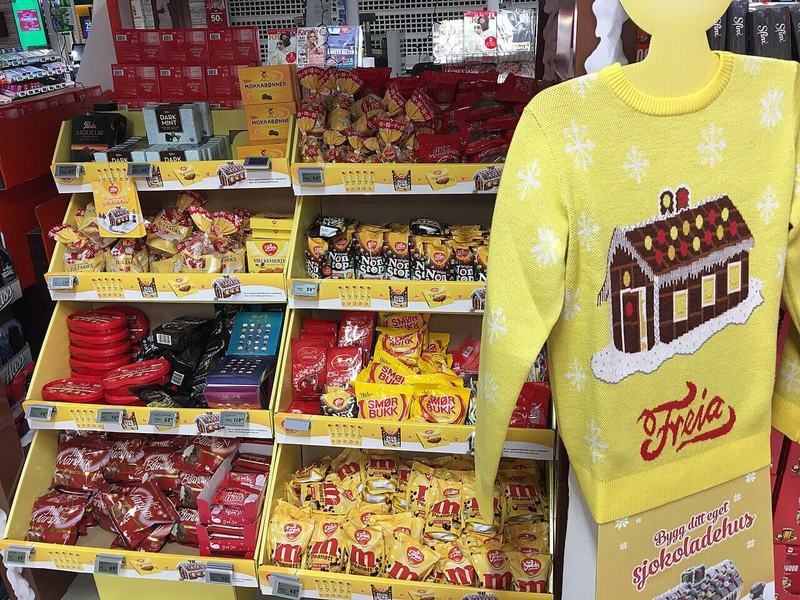
Gjetost cheese 💲 💲 💲 💲
Gjetost cheese is made from the cow and goat’s milk according to the special recipe. It has a distinctive sweet flavour, yet it doesn’t include any added sugar. Norwegians are very proud of this cheese and it’s a must to try for any cheese connoisseur.
🛒 Where to buy: supermarkets
💰 Price range: 90 - 120 NOK
🎁 For whom: grandparents, parents, friends

Liquorice chocolate 💲 💲 💲 💲
Liquorice, a sweet or salty candy, is a local, traditional delicacy. Mixed with chocolate, it becomes a delicacy! Liquorice chocolate has is also benefitial for health - it helps relieve sore throats!
🛒 Where to buy: markets, supermarkets
💰 Price range: 45 - 100 NOK
💡 Pro tip: The best can be bought at Mathallen market in Oslo.
🎁 For whom: grandparents, parents, friends, kids
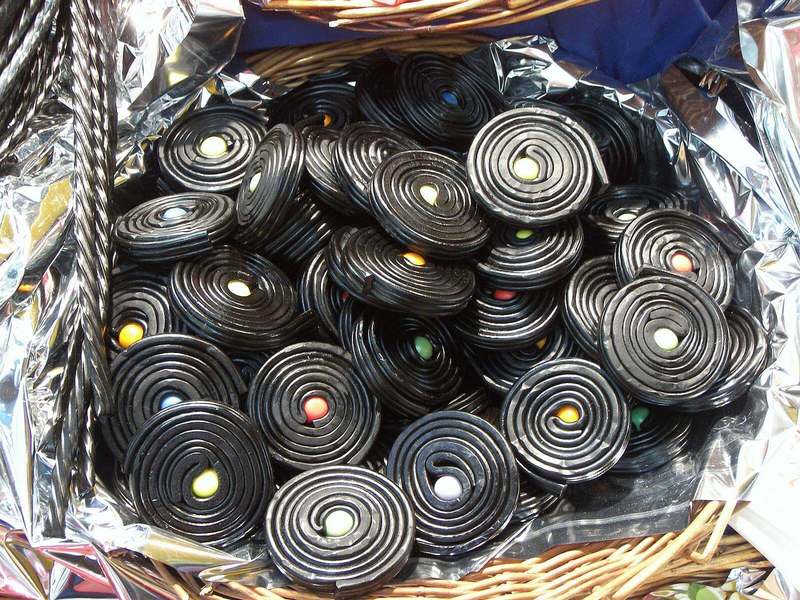
Reindeer sausage 💲 💲 💲 💲
It might seem strange, but deer and reindeer sausages are considered local delicacies thanks to their distinct flavor. You can find them in food markets, deli shops, and, of course, Mathallen.
🛒 Where to buy: supermarkets
💰 Price range: 70 - 100 NOK
🎁 For whom: grandparents, parents, friends

Rosette cookies 💲 💲 💲 💲
Rosette cookies are delicate, crispy, vanilla-flavoured sweets typically consumed during Christmas time. Sprinkle them with cinnamon and enjoy them while drinking a delicious hot cocoa!
🛒 Where to buy: supermarkets
💰 Price range: 300 - 500 NOK
🎁 For whom: grandparents, parents, friends, kids
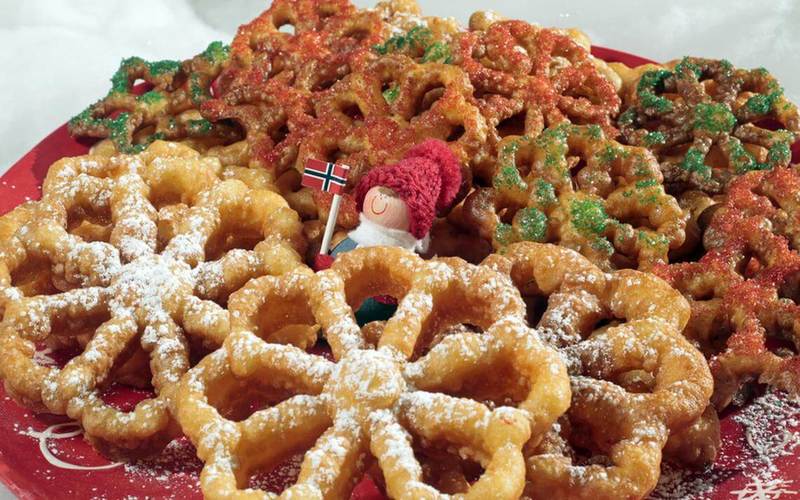
Smoked salmon 💲 💲 💲 💲
Smoked salmon is one of the most famous Norwegian foods. It’s known from its great quality and distinctive taste. Buy it together with Norwegian cheese, some crackers, cloudberry jam and chocolate, so you can prepare a full Nordic meal for your loved ones.
🛒 Where to buy: supermarkets
💰 Price range: 135 - 1300 NOK
🎁 For whom: grandparents, parents, friends

🖖 Handmade
Rosemaling 💲 💲 💲 💲
Rosemaling, the decorative folk painting of Norway, started becoming popular in the XVII century when upper-class European art styles were introduced to Norway’s culture. Today, the rosemaling technique is becoming popular again in Norway - you can find more traditional objects like boxes and plates, but also rosemaling cups and vases.
🛒 Where to buy: gift shops
💰 Price range: 30 - 500 NOK
🎁 For whom: souvenirs.for_whom.grandparetns, parents, friends
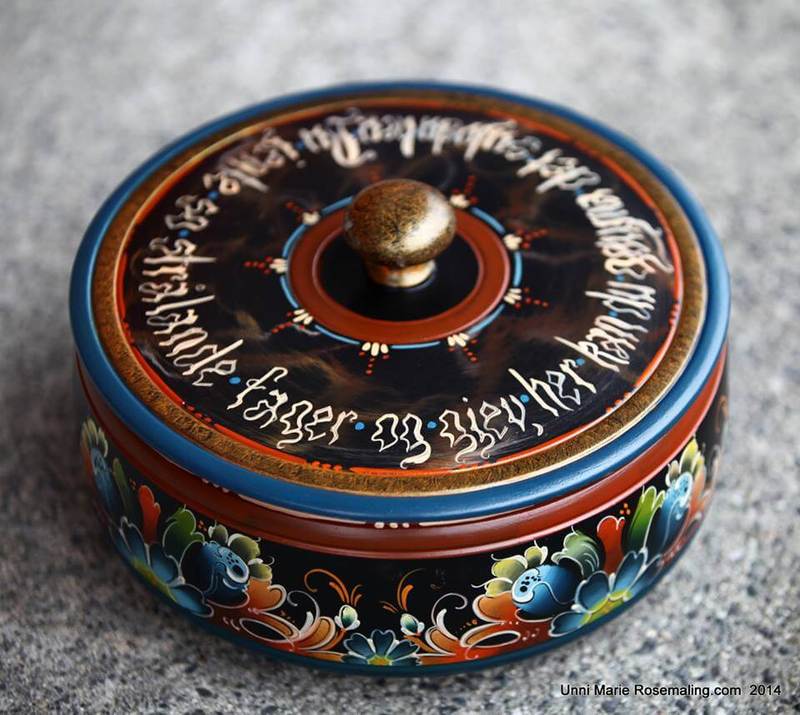
Vintage cookware 💲 💲 💲 💲
If you're looking to bring some color to your kitchen at a low price and you're looking for some unique designs, you should check out Norwegian vintage shops and look for the vintage cookware. They're useful and beautiful at the same time, and for sure on a lower end of a price range!
🛒 Where to buy: markets
💰 Price range: 100 - 400 NOK
💡 Pro tip: You can find some at a flea market in Oslo called Vestkanttorvet.
🎁 For whom: grandparents, parents
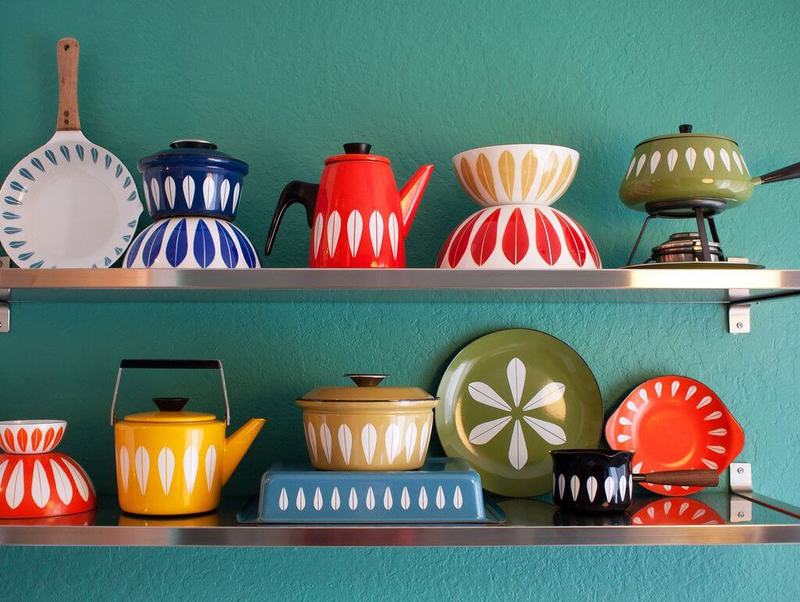
Wooden coffee mug 💲 💲 💲 💲
This mug, also known as Kuksa is not your typical porcelain mug. It's made completly out of wood! It's especially popular among hikers, as it is very durable even in the most extreme conditions and can handle any kind of liquid. According to tradition, each hiker makes his own Kuksa, but nowadays there's no need for you to go and carve it from a forrest log - you can buy it in local souvenir shops!
🛒 Where to buy: gift shops
💰 Price range: 50 - 300 NOK
🎁 For whom: grandparents, parents, friends

🏡 Home Decor
Viking drinking bowls 💲 💲 💲 💲
You can find Viking souvenirs in almost any souvenir shop, but those who want to splurge for something more unique should go to a vintage shop and look for Viking drinking bowls. The bowls are usually shaped like ships with dragons carved on both ends and some are ornamented in different art styles.
🛒 Where to buy: gift shops
💰 Price range: 1000 - 3000 NOK
🎁 For whom: friends
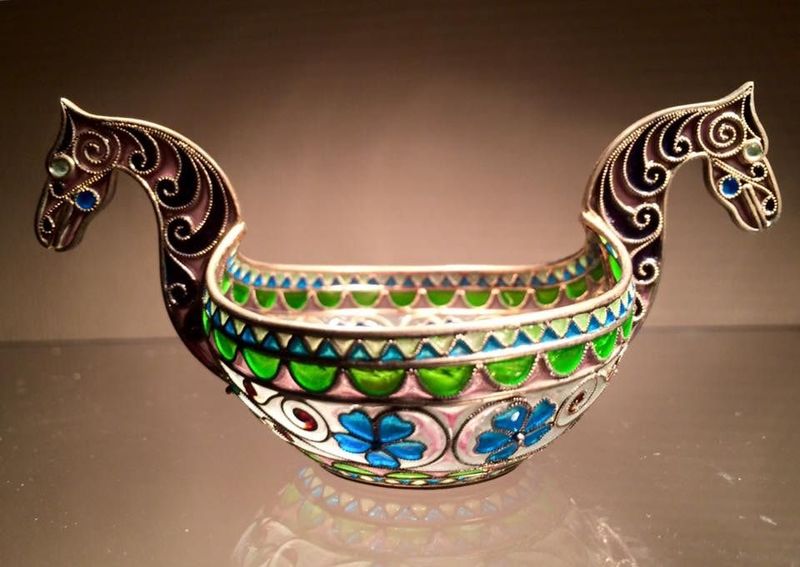
 Norway - Souvenirs
Norway - Souvenirs
We hope that in this article you have found some suggestions of souvenirs from Norway that you liked! Or maybe you have a different idea of what to bring your loved ones from this country? Be sure to write!
Did you find this information valuable?
Thank you for co-creating with us! 😊 Remember to give us feedback by pressing the thumbs up or down under every section.
The quality of content is essential for us. Please let us know what influenced your opinion.
Thank you!
Norway packing list 💡
- Warm clothing - A fleece sweatshirt, a rain jacket and clothes that will allow us to put on layers are necessary during the travelling in Norway.
- Comfortable trekking shoes - Most of the hiking trails in Norway are wet at times, so you should take care of waterproof shoes.
- Packed lunch - Norway, like all Scandinavia, is quite an expensive country. Therefore, when planning longer trips, it is worth stocking up on snacks in your country that will give us strength during the whole day's journey.
- Cream with a UV filter - Even beyond the Arctic Circle, hot weather can happen in the summer, so don't be surprised by the warm rays of the sun.
- Preparations against mosquitoes - In summer, near water reservoirs, fluff and mosquitoes can be a bit of a thug.
Did you find this information valuable?
Thank you for co-creating with us! 😊 Remember to give us feedback by pressing the thumbs up or down under every section.
The quality of content is essential for us. Please let us know what influenced your opinion.
Thank you!
Get a personalized packing list before travel to Norway 🧳
Health information
Health risks and required vaccinations
Packing lists
Personalized item list to pack matching your destination
Weather insights
Packing list adjusted to local weather
To-do lists
Everything you need to do before leaving home
Weight limits
Never pay excess baggage fees again
Local prices
Average cost of food, tickets and accommodation
Tourist information about Norway
| Country | Norway |
| Capital | Oslo |
| Currency | Norwegian krone |
| Language | Norwegian, Sámi |
| Timezone | GMT+1 |
| English speaking | Widely spoken (advanced) |
| LGBT tolerance | Very high |
| Gender ratio (overall) | 49% | 51% |
| Population | 5.4 mln |
| Visitors per year | 5.9 mln |
Did you find this information valuable?
Thank you for co-creating with us! 😊 Remember to give us feedback by pressing the thumbs up or down under every section.
The quality of content is essential for us. Please let us know what influenced your opinion.
Thank you!
Useful information about Norway
| Card payments | |
| ATM Availability | Widely available |
| Suggested ATM takeout | 1000 NOK |
| Drinking in public | |
| Tap water | |
| Internet speed (avg.) | 87 Mbps |
| Socket type |
|
| Best taxi app | |
| Public toilets | Popular & Paid |
| Top mobile providers | Telenor, Telia, Ice |
| Best internal air carrier | SAS |
Did you find this information valuable?
Thank you for co-creating with us! 😊 Remember to give us feedback by pressing the thumbs up or down under every section.
The quality of content is essential for us. Please let us know what influenced your opinion.
Thank you!
Cost of living in Norway
| Meal, Inexpensive Restaurant |
15.26 EUR
17.91 USD
13.3 GBP
64.31 PLN
180 NOK
|
| Meal for 2 People, Mid-range Restaurant |
67.84 EUR
79.58 USD
59.12 GBP
285.84 PLN
800 NOK
|
| Domestic Beer (0.5 liter draught) |
7.63 EUR
8.95 USD
6.65 GBP
32.16 PLN
90 NOK
|
| Gasoline (1 liter) |
1.38 EUR
1.61 USD
1.2 GBP
5.8 PLN
16.22 NOK
|
| One-way ticket (public transport) |
3.14 EUR
3.68 USD
2.73 GBP
13.22 PLN
37 NOK
|
Did you find this information valuable?
Thank you for co-creating with us! 😊 Remember to give us feedback by pressing the thumbs up or down under every section.
The quality of content is essential for us. Please let us know what influenced your opinion.
Thank you!
Quality of life in Norway
| Quality of life | Very high |
| Safety Index | High |
| Healthcare likability | High |
| Climate likability | High |
| Costs of living | High |
| Level of pollution | Very low |
Did you find this information valuable?
Thank you for co-creating with us! 😊 Remember to give us feedback by pressing the thumbs up or down under every section.
The quality of content is essential for us. Please let us know what influenced your opinion.
Thank you!
Important numbers
| General emergency number (mobile phone) | 112 |
| Fire | 110 |
| Police | 112 |
| Ambulance | 113 |
Did you find this information valuable?
Thank you for co-creating with us! 😊 Remember to give us feedback by pressing the thumbs up or down under every section.
The quality of content is essential for us. Please let us know what influenced your opinion.
Thank you!

